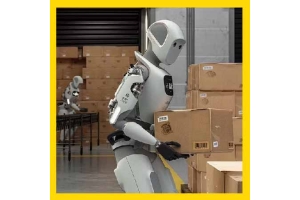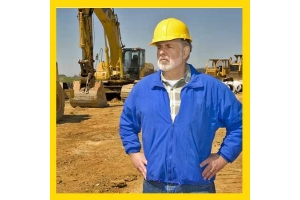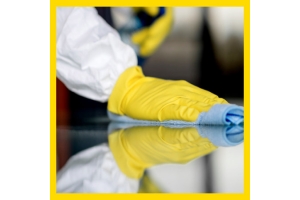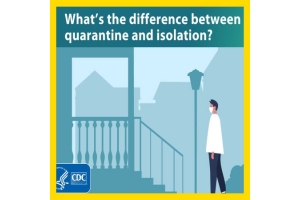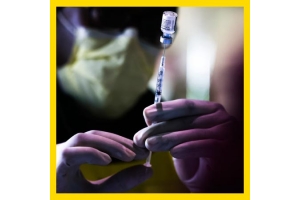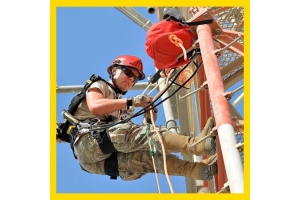Currency
-
November 30, 2020Emmitsburg, MD — Sixty-two firefighters died while on duty in 2019 – the fewest since the U.S. Fire Administration began tracking such data in 1977, according to an annual report recently released by the agency.
This total marks a 26% decrease from the 84 on-duty firefighter fatalities recorded in 2018. In 2016 and 2017, that figure was 92 and 88, respectively.
The report, released Nov. 6, classifies “on-duty” as “being involved in operations at the scene of an emergency, whether it is a fire or non-fire incident; responding to or returning from an incident; performing other officially assigned duties such as training, maintenance, public education, inspection, investigations, court testimony or fundraising; and being on call, under orders or on standby duty (except at an individual’s home or place of business).”
Thirty-seven of the firefighters died while responding to emergencies, while 33 of the deaths resulted from heart attacks.
-
November 30, 2020The simple answer is to make sure the measuring is done correctly
EN 60079-29 series standards specifies general requirements for construction, testing, performance, selection, installation use and maintenance for flammable gases and oxygen gas detection and measurement systems. It also describes the test methods that apply to portable, transportable and fixed apparatus for the detection and measurement of flammable gas or vapour concentrations with air.
This standard is applicable to flammable gas detection systems intended to provide an indication, alarm or other output function for the purpose of warning of a potential explosion hazard. These systems are expected to initiate automatic or manual protective actions in case of any potential hazard. Hence generating alarms and providing outputs in correct level is very important.
EN 60079-29-1 is intended to provide -
November 30, 2020Depending on the parts of the oil and gas industry your company operates in, you’ll be well aware of the ever-changing hazards that your workers face.
Although there are many trends that impact health and safety efforts, from an ageing workforce and generational divide to a greater reliance on the ‘gig economy’ moving forward, there are also steps that all businesses can take to bring greater protection to their strategy right now and to enlist new tools dedicated to looking after their lone workers specifically.
Here we cover the five fundamental steps organizations can take towards achieving a greater health and safety strategy for their employees.
1.Identify your lone workers
The first and perhaps most important thing you need to do when in the planning stages is to identify who your lone workers actually are.
According to the HSE, lone workers are “those who work by themselves without close or direct supervision”, -
November 30, 2020When choosing a glove for protection against viruses like the one that causes COVID-19, it’s important to know which regulatory standards exist to help ensure proper protection.
In the European Union, the EN ISO 374:2016 standard measures the ability of gloves to protect users against dangerous chemicals and micro-organisms. Part 5 of the EN ISO 374 standard outlines the terminology and performance requirements for micro-organisms risks (including viruses). Gloves featuring the EN ISO 374-5 VIRUS pictogram on packaging are proven to prevent the penetration of viruses through the glove material when tested in accordance with ISO 16604*.
In North America, the ability of gloves to protect against micro-organisms is defined by ASTM F 1671, a similar test to ISO 16604, whereby a sample of glove material is placed in a test cell with a bacteriophage under pressure one side. The glove is only confirmed as protective against viruses if there is zero penetration of bacteriophage -
November 23, 2020The FDA announced on November 17 that it had approved the first diagnostic at-home self-administered coronavirus test, according to NPR.
The Lucira COVID-19 All-In-One Test Kit will be sold for $50. The molecular single-use test works by being swirled in a swabbed sample and placed in a hand-held test unit. Results are available in 30 minutes, with the unit’s display lighting up to inform users of a positive or negative test result.
“While COVID-19 diagnostic tests have been authorized for at-home collection, this is the first that can be fully self-administered and provide results at home,” said FDA Commissioner Stephen Hahn.
The test will be available via prescription to people who are 14-years-old and older. Younger patients must receive the test from a health care professional.
SOURCE:
https://ohsonline.com/articles/2020/11/19/first-at-home-coronavirus-test-approved-by-fda.aspx?admgarea=news -
November 23, 2020Falls from heights don’t have to happen. Learn how to protect your workers and your company in this Fall Protection eBook.
One of the main causes of workplace fatalities is fall from heights. Often this is due to inadequate solutions, especially when workers don’t have access to fall protection equipment or are not using it properly. Part of it is due to a lack of training, as one out of five fatalities occur during the victim’s first two months on the job.
The costs to a company when a fall occurs – hospitalization, worker’s compensation and lost productivity - are just some of the liabilities - and they have the potential to be overwhelming and catastrophic.
These accidents and deaths don’t have to happen, and this eBook will explain the best practices your company can and should follow to prevent injuries and fatalities due to falls from heights. -
November 23, 2020What began as an outbreak of serious illness caused by a novel coronavirus in December 2019 in Wuhan, China, quickly spread around the world and was declared a global pandemic by the World Health Organization (WHO) on March 11, 2020.
In the United States, the first laboratory-confirmed case was diagnosed in the state of Washington on January 20, 2020. Within two months, hospitals in numerous states were overwhelmed with cases of critically ill COVID-19 patients.
There was a huge surge in demand for PPE like gowns and masks, but supply chains were disrupted and stockpiles were quickly depleted. The situation became dire. Medical isolation gowns and masks were in such short supply that healthcare professionals were re-using these single-use items for days or even weeks at a time, putting themselves at increased risk of exposure to SARS-CoV-2, the virus that causes COVID-19. -
November 23, 2020Hearing loss can't always be prevented, but hearing loss due to exposure to loud noises is completely avoidable. Even a low level of noise can be hazardous to the human ear and may have serious consequences.
There are some simple things you can do to help stop loud noises from permanently damaging your hearing, no matter how old you are.
1. Avoid loud noises
The best way to avoid noise-induced hearing loss is to keep away from loud noise as much as you can.
Generally, a noise is probably loud enough to damage your hearing if:
● you have to raise your voice to talk to other people
● you can't hear what people nearby are saying
● it hurts your ears
● you have ringing in your ears or muffled hearing afterwards
● Noise levels are measured in decibels (dB): the higher the number, the louder the noise. Any sound over 85dB can be harmful, especially
-
November 15, 2020Launching its Know Your Building campaign, data from the Fire Protection Association (FPA) reveals the huge financial impact of fires on businesses and services in the UK over a ten-year period.
The analysis of 4,782 major UK fires between January 2009 and December 2019 where the financial loss was £100,000 or more, revealed a mean average loss of £657,074 per incident. The analysis focuses on fires in buildings used by private and public sector organisations, and residential and mixed multiple occupancy shared ownership buildings.
Overall, loss values account for several areas including damage to buildings (43% of the average value), interruption to business or services (18%), damage to contents (7%), damage to machinery or plant equipment (5%), loss of stock (5%) and loss of income or rent (2%).
Retail buildings were those most affected by large losses (15% of -
November 15, 2020Acrophobia ranks third on the list of things people fear the most, so why is it often so hard to get people to comply with the regulation that they must tie off while wearing an approved fall arrest harness? Well for starters, no such regulation exists. Now, before you get all self-righteous and belligerent, let me explain.
While it is true that there are in fact, many regulations that require employers to protect workers from falls from height, none (at least that I can find or know of) specifically require that a harness be worn. It makes no sense to me that safety professionals who are well-versed in the hierarchy of controls ignore them when they are looking at fall protection. The typical first response is to insist on Personal Protective Equipment – the lowest control in the hierarchy of controls and by far the least effective.
Fascination

